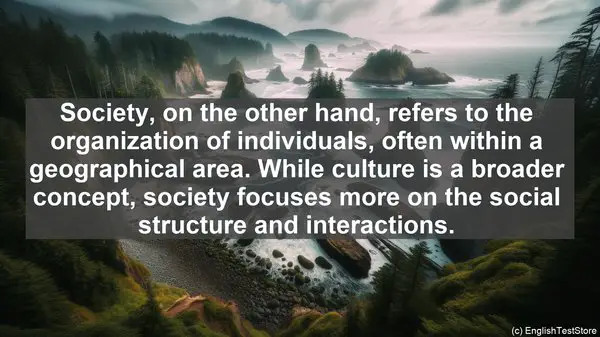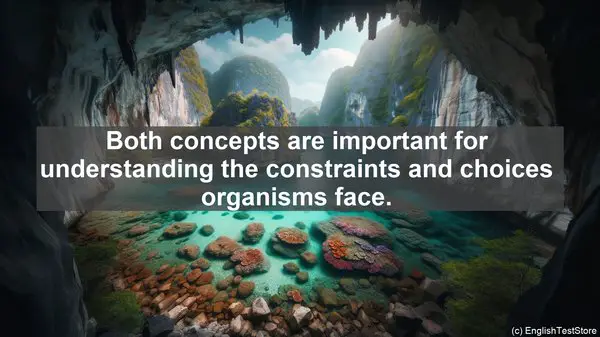Introduction: The Importance of Clarity in Scientific Communication
Welcome to today’s lesson on the top 10 commonly confused words in Human Behavioral Ecology. As students and researchers, we often come across terms that sound similar but have distinct meanings. Misinterpreting or misusing these words can lead to confusion and inaccuracies in our work. So, let’s dive in and clarify these concepts!
1. Adaptation vs. Acclimation
Adaptation and acclimation are two terms that refer to an organism’s response to its environment. However, they differ in their time scale and permanence. Adaptation is a long-term evolutionary process, where genetic changes occur over generations. On the other hand, acclimation is a short-term physiological adjustment that an individual makes within its lifetime. Understanding this distinction is crucial when studying how humans respond to environmental challenges.
2. Cooperation vs. Altruism
Cooperation and altruism are often used interchangeably, but they have subtle differences. Cooperation refers to individuals working together for mutual benefit. Altruism, on the other hand, involves selfless actions that benefit others at a cost to oneself. While cooperation can be driven by self-interest, altruism is a more selfless act. Distinguishing between these terms helps us understand the complex dynamics of social behavior.
3. Culture vs. Society
Culture and society are terms that are closely related but not synonymous. Culture encompasses the beliefs, values, and practices of a group, including their knowledge and technology. Society, on the other hand, refers to the organization of individuals, often within a geographical area. While culture is a broader concept, society focuses more on the social structure and interactions. Both are essential for studying human behavior, but they capture different aspects of it.
4. Foraging vs. Feeding
Foraging and feeding are terms used to describe an organism’s search for food. Foraging is a broader concept that includes not just the act of finding food but also the decision-making processes involved. Feeding, on the other hand, refers specifically to the consumption of food. When studying human behavioral ecology, understanding the strategies and trade-offs involved in foraging is crucial for understanding resource allocation and energy expenditure.
5. Kin Selection vs. Group Selection
Kin selection and group selection are two evolutionary theories that explain the emergence of certain behaviors. Kin selection suggests that individuals may act altruistically towards their relatives to increase the chances of their shared genes being passed on. Group selection, on the other hand, proposes that certain traits or behaviors may be favored at the group level, even if they are not beneficial to individuals. Both theories have contributed to our understanding of social behavior, but they operate at different levels of selection.
6. Migration vs. Dispersal
Migration and dispersal are terms used to describe the movement of individuals or populations. Migration typically refers to the seasonal movement of organisms from one region to another, often driven by resource availability. Dispersal, on the other hand, is the movement of individuals away from their birthplace, often to establish new territories. Understanding these terms helps us study patterns of movement and the factors influencing them.
7. Phenotype vs. Genotype
Phenotype and genotype are terms used in genetics and evolutionary biology. Genotype refers to an organism’s genetic makeup, the specific combination of alleles it carries. Phenotype, on the other hand, refers to the observable traits or characteristics of an organism, which are influenced by both genetic and environmental factors. Distinguishing between these terms is crucial when studying the relationship between genes and traits.
8. Resource vs. Signal
Resource and signal are terms used in the context of animal behavior. A resource is something that an organism needs, such as food or shelter. A signal, on the other hand, is a form of communication, often used to convey information about the availability of resources or to attract mates. Understanding the distinction between these terms helps us study the complex interactions and strategies employed by organisms in their environment.
9. Trade-off vs. Optimal Strategy
Trade-off and optimal strategy are concepts used to describe decision-making processes in ecology and evolution. A trade-off refers to a situation where gaining a particular benefit comes at a cost. An optimal strategy, on the other hand, is the best course of action that maximizes fitness. While trade-offs involve compromises, optimal strategies aim to maximize benefits. Both concepts are important for understanding the constraints and choices organisms face.

10. Ultimate vs. Proximate Causation
Ultimate and proximate causation are terms used in evolutionary biology to explain the causes of a particular behavior or trait. Ultimate causation refers to the evolutionary reasons or benefits behind a behavior. Proximate causation, on the other hand, focuses on the immediate factors, such as hormonal or neural mechanisms, that trigger the behavior. Understanding both levels of causation provides a more comprehensive understanding of behavior.

